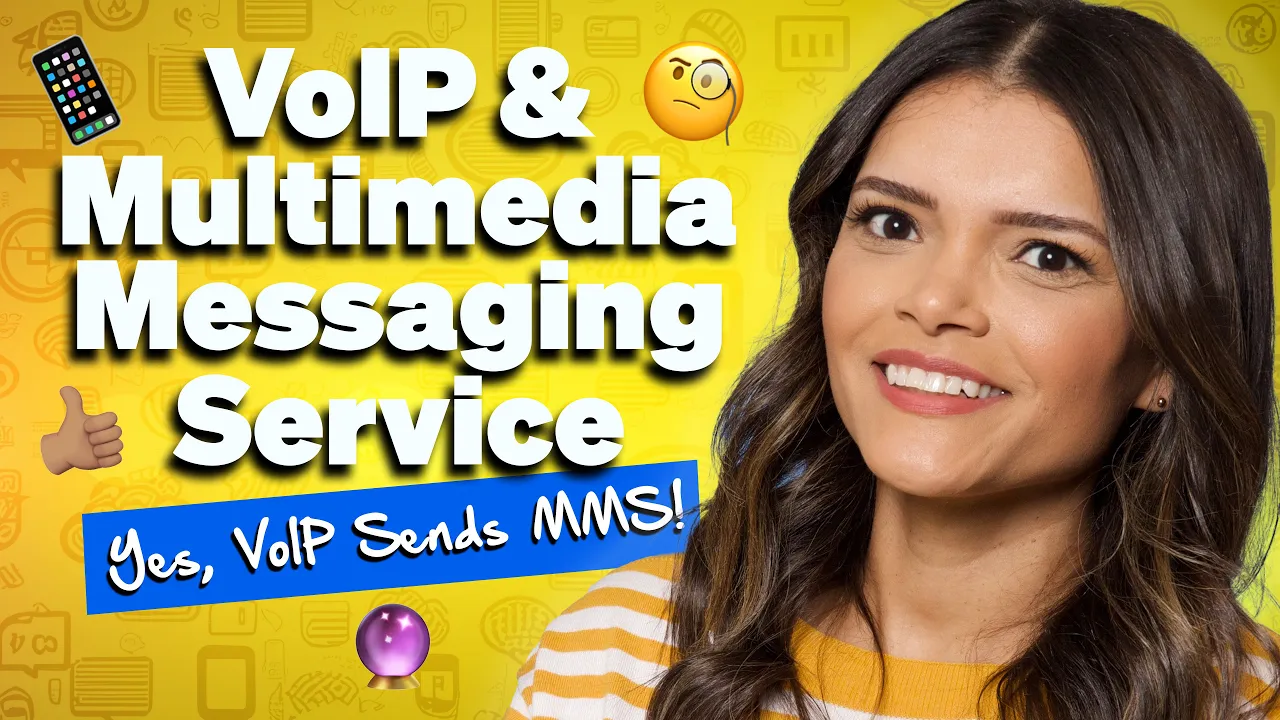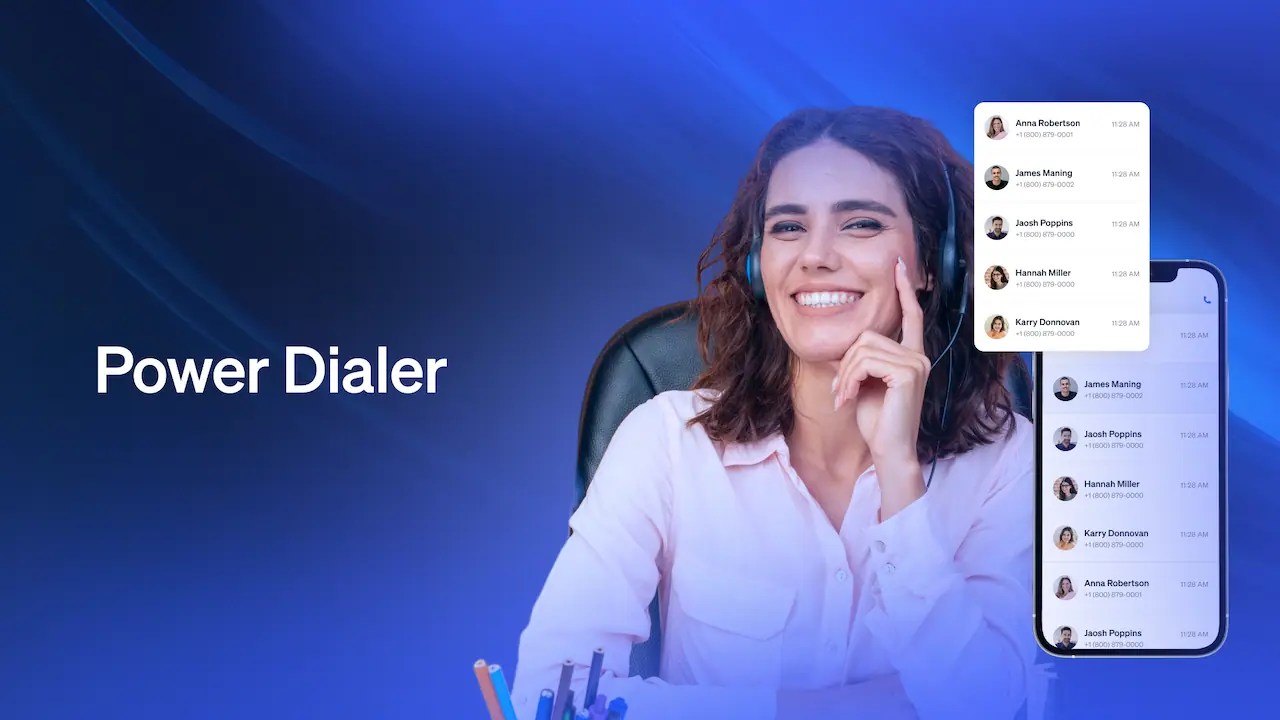Modern consumers communicate using emojis, GIFs, voice notes, photos, and videos. So when your brand sends a plain text message, they can’t be bothered to open it, let alone read it.
Multimedia Messaging Service (MMS) brings visual impact and personality to your outreach. Almost three-quarters of consumers say messages with visuals, like images and GIFs, showcase a brand’s identity more effectively, according to Attentive. These audiovisual elements make content more persuasive.
When done right, MMS marketing drives loyalty, engagement, and revenue. A robust business text messaging platform can help your team deliver rich and real-time engagement that modern consumers have come to expect.
Take the AI Maturity Assessment
In just 5 minutes, get your personalized score and recommendations to move forward with AI.
What Is MMS Marketing?
MMS marketing lets businesses send images, GIFs, audio clips, and videos to a customer’s mobile phone. This makes MMS messages feel personal and modern. It differs from traditional text messages in that it is visual, featuring animations, videos, audio, and other multimedia elements.
Unlike short message service (SMS) marketing, which limits messages to 160 characters, MMS messages can be up to 1,600 characters in length. This expanded character limit creates a more interactive experience. It supports storytelling, product demos, and emotional resonance in ways SMS can’t.

With multimedia content, MMS campaigns transform static offers into immersive experiences that recipients can see, hear, or act on. If you’re still relying on plain-text outreach, MMS tools are worth exploring to level up your mobile marketing strategies.
MMS and SMS differences
| Feature | SMS: Simple and functional | MMS: Visual and strategic |
|---|---|---|
| Message format | Text only; 160-character limit | Includes GIFs, images, videos, audio, and extended texts; 1,600 characters |
| User experience | Fast and scannable but flat | Expressive; more personal and human |
| Marketing strength | Ideal for alerts and quick updates | Ideal for branding, storytelling, and product highlights |
| Response behavior | Skimmed but often ignored | Most likely to be clicked, shared, and emotionally remembered |
| Cost and ROI | Lower upfront cost | Higher cost but better conversion and branding ROI |
Why Do Businesses Need MMS Marketing?
Today’s shoppers expect visual proof, and smart brands using MMS marketing speak their language:
- Built-in shareability: Visually rich MMS messages are more likely to be shared with family and friends. This built-in virality turns customers into organic promoters. Brands can take advantage of this inherent shareability through UGC or limited drops that people naturally want to pass along.
- Faster response: MMS lands directly in a customer’s default messaging inbox, eliminating extra clicks on promotional apps or tabs. This creates real-time urgency, perfect for time-sensitive campaigns like countdowns, flash sales, or regional promos. With visuals to prompt action, response times improve naturally.
- Visual content preferences: Power Reviews reported that 60% of consumers look for product visuals before deciding if they want to buy. For Gen Z, that number jumps to 68%. When your brand message includes an interactive element, this generally aligns with how your target customers already research and make purchases. Promotional emails are too vibrant and busy, while SMS campaigns are too bland. Meanwhile, MMS messages mirror how friends communicate — briefly, visually, and expressively. This familiarity makes multimedia content more clickable.

Benefits of MMS Marketing
MMS messages, when used consistently, become a direct, visual touchpoint that drives real movement in the customer journey. This is especially beneficial when integrated into a unified customer communication strategy that includes text, voice, and email.
Higher engagement and conversion rates
Familiarity with MMS messages reduces resistance and encourages recipients to take action. People are used to sending photos, GIFs, and emojis to friends, and MMS aligns with that behavior. This deep familiarity makes MMS messages feel less intrusive. Visual messages seem more like a recommendation by a trusted brand instead of a sales pitch.
Additionally, incorporating visuals can increase engagement by up to 250%, according to EZ Texting. Visuals help recipients process the value of an offer more quickly, which reduces the time lag between seeing a message and taking action.
Enhanced brand recall and recognition
Sending MMS messages that consistently use your brand’s logo, colors, typefaces, and even sound builds brand recognition and trust. This establishes recognizable cues that make people more comfortable clicking your links.
A compelling visual also evokes emotion quickly, which increases brand recall and response. The right visuals can communicate tone, character, urgency, and value. This type of high-emotion content creates a mental shortcut for faster recall.

Increased shareability
When a message feels tailor-made or unexpectedly delightful, recipients are more likely to share it. They organically become brand advocates, making MMS marketing a quiet but potent referral engine.
MMS campaigns can also turn visuals into viral offers. An MMS message with strong visual storytelling, like a teaser video or animated preview, creates a sense of urgency and exclusivity. This makes the message a conversation starter that people reshare in group chats, social media platforms, or even in face-to-face conversations. It serves as social proof that expands your reach without incurring additional expenses.
Richer customer experience
A well-chosen photo can accentuate your call to action. A specific GIF can convey a tone better than words. A thoughtfully designed video can highlight key benefits. By layering visual and audio elements, you can tap into viewers’ emotions more effectively. This emotional impact is particularly effective on mobile devices, where attention spans are short but reactions are immediate.
Personalization goes beyond text. In MMS marketing, brands can customize visuals, offers, or product images to match previous behavior. This makes the customer journey feel more thoughtful and intentional. When paired with customer engagement tools like journey mapping, this targeted multimedia content makes the recipients feel seen and valued.
Stronger data collection and insights
MMS marketing gives brands a clearer view of what’s working by revealing which specific element sparks engagement. This can be the image that got the most taps or the animated video that resulted in a spike in replies. With this level of insight, brands can conduct creative A/B testing, optimize multimedia content, and make better decisions about what to send next.
Compared to text-only messages, MMS offers a richer feedback loop to enhance performance and personalization. Every feedback becomes a signal. Every interaction uncovers trends in timing, behavior, and preferences.
Complementary to omnichannel contact center strategy
Imagine a customer getting a visual breakdown of a billing issue via MMS messages. This reduces the need for follow-up calls or emails. Combining MMS with other touchpoints in an omnichannel setup helps lower operational strains. It also improves response time, which is a key benefit in modern contact center settings.

Contact centers today are expected to resolve problems quickly while demonstrating value. Visual messaging empowers agents to utilize MMS as a problem-solving tool, providing customers with clear guidance. This significantly reduces back-and-forth communication, leading to faster resolution.
Use Cases and Real-World Examples
MMS is a flexible tool that works for nearly any industry or customer journey.

Here are some MMS marketing efforts that go beyond the standard playbook:
Event reminders
MMS messages are great for making reminders harder to ignore. Brands can use multimedia content to remind their audience about a webinar, live event, or an appointment. Visual prompts can improve attendance by presenting the time, date, and link in a more engaging format. This is particularly effective in health care, where no-shows cost time and revenue. Sending a visual reminder encourages customers to follow through.

MMS marketing can keep the conversation going even after an event. A follow-up message with a GIF or thumbnail link to a recap video or feedback form ensures a seamless campaign conclusion and encourages further interaction.
Product launches
Shoppers want to see a glimpse of what your new products look like in real life and not just in neatly staged galleries. An animated preview or candid image can help your target audience connect better with your products.
Interactive content tells a story. Clothing brands, for example, use short clips in MMS to highlight new collections before they hit the shelves. This approach helps recipients imagine how the items move and fit. This adds another layer of context that improves engagement and click-through rates from the get-go.

Flash sales
MMS marketing is ideal for flash sales that rely on speed and urgency. A well-designed GIF or product teaser video can convey value and scarcity all at once. These visual cues encourage faster clicks and more immediate action. Brands can also reduce friction in the buyer’s journey when these visuals are paired with a direct CTA.
Customer reengagement
Global cart abandonment rates have reached 70%, according to Statista, making it one of the most pressing issues in e-commerce. MMS marketing gives brands a way to pull customers back in. A quick message with a photo of the left-behind item acts as a personalized visual nudge. This creates a timely reentry point that email follow-ups often fail to deliver.
Since mobile devices are within reach all the time, recipients can act on these gentle reminders right away. Life gets hectic, and an MMS reminder helps customers pick up where they left off in their online shopping.
Customer surveys
MMS marketing transforms dull survey invites into brand-forward experiences. By adding branded visuals and a short explainer video, you give recipients a reason to pause, engage, and respond. This kind of multimedia content elevates the overall customer experience. It makes surveys feel more engaging and less like a chore.

Key Features of Effective MMS Marketing Platforms
The best MMS marketing platforms offer businesses and marketers creative flexibility and technical ease.
File type flexibility
Modern campaigns use different file formats that serve different goals:
- A looping GIF can spark curiosity.
- A short MP4 clip can demo a product or service.
- A static JPEG or PNG can showcase promos or offerings in branded detail.
- An MP3 allows for voice notes and sound logos.
The more file types a platform supports, the more agile the campaign can be.
CRM integration
Name-dropping in messages is old-school personalization. These days, proper CRM integration ensures that MMS messages align with customer behavior, preferences, and past purchases. This makes each message feel truly relevant. CRM integration with marketing automation transforms MMS from a generic blast into a genuine one-to-one touchpoint.
Reply handling
MMS marketing platforms can manage two-way conversations efficiently. Instead of sending replies into a generic inbox, smart platforms route responses directly to the right team based on keywords, sender profile, or campaign type. Maintaining the full conversation history also ensures the team isn’t flying blindly. Each reply carries context that allows team members to respond meaningfully. This continuity helps nurture customer engagement.

Compliance and privacy management
MMS marketing platforms with built-in compliance features help brands automatically align with regulations like the Telephone Consumer Protection Act (TCPA) in the U.S. and the General Data Protection Regulation in the EU. Consent tracking, automated opt-in flows, and message auditing reduce legal risks while keeping your target audience protected.
More than following regulations, requiring informed consent helps build trust. Customers who actively opt in are more engaged and less likely to view your MMS messages as intrusive or spammy.
Automation and scalability
With built-in automation, businesses can schedule MMS campaigns and follow-ups at the right time. This ensures messages reach the target audience when they’re most likely to engage. This also enables companies to scale outreach across large segments without losing message quality.
Automation ensures consistency and speed whether you’re running promotions or sending notifications. And because MMS marketing campaigns incur a cost per message, smart automated scheduling also helps manage pricing efficiency, all while tracking performances with urchin tracking module parameters.
Best Practices for Effective MMS Campaigns
A smart MMS marketing strategy optimizes outreach responsibly, efficiently, and ethically. Get the best results from your campaigns with these tips:
- Gain explicit consent from recipients: Always ask customers to opt in before launching any MMS or SMS campaign. This way, you’re reaching a receptive audience while maintaining trust. Plus, engaged subscribers are more likely to stick around in the long term.
- Use a trustworthy provider that supports SMS, MMS, and inbound calls: A unified platform simplifies setup and operations. It also reduces the risk of fragmented messaging across channels.
- Use compelling visuals that complement messaging: A great CTA falls flat if the visual design doesn’t support it. Ensure every photo, audio, or video adds context, urgency, and emotional depth.
- Optimize multimedia for quick loading and efficiency: Speed matters, so compress large files to stay within file size limits. This also ensures quick delivery across all mobile devices, reducing bounce and abandonment rates.
- Personalize MMS content through CRM data: Dynamic visuals paired with names or product preferences enhance relevance and strengthen customer loyalty.
- Use A/B testing to refine visual appeal and content effectiveness: Small tweaks in tone, layout, or image style can maximize the impact of your message.
- Consider non-marketing uses, such as for dispatch or technicians in the field: Send real-time updates, notify a referrer about complete tasks, or confirm job summaries for remote teams. Use MMS to enhance service communications.
Challenges and Solutions in MMS Marketing
Like any effective marketing channel, MMS has its hurdles. But each challenge has a clear solution, especially when using the right platform.
- Ensuring 10-digit long code (10DLC) compliance: To ensure consistent deliverability, businesses must register through the Campaign Registry under the 10DLC system (personalized phone numbers for business communication and text messaging). This protects your number’s reputation and ensures long-term text message deliverability. Nextiva handles this process for you, reducing your setup time and stress.
- Managing file size limits and load times: Large media can slow down delivery. Worse, they fail to render on mobile phones. The solution is simple: Compress images and videos to stay under 300 KB without sacrificing quality.
- Justifying ROI: MMS has a higher upfront cost than SMS, but it also has higher conversion and engagement rates. When visuals drive faster action and sharing, the cost per conversion shrinks.
- Navigating compliance and privacy: Stay ahead of evolving regulations by choosing a platform that continuously updates with local data and privacy laws. Proactive compliance features like built-in audit trails can protect your brand while reinforcing trust with privacy-conscious customers.

Nextiva: The Ultimate Voice, Text & MMS Solution for Teams
Smart MMS marketing delivers the 3Cs: Connect, convert, and create standout experiences for your customers.
Big or small, Nextiva can help your team create a high-impact MMS campaign that meets consumers’ demand for dynamic, engaging messaging. Its tools help businesses drive results for MMS campaigns by streamlining automation, improving customer service, and centralizing omnichannel strategies.
With Nextiva, your voice, text, and multimedia messaging efforts will create a unified experience that strengthens brand trust and improves customer interaction.
Ready to discover how Nextiva boosts modern customer communications? Get started now.
Relationships start with a conversation.
Seamlessly manage all voice, video, and messaging communications with customers on a unified platform.

















 Customer Experience
Customer Experience 








